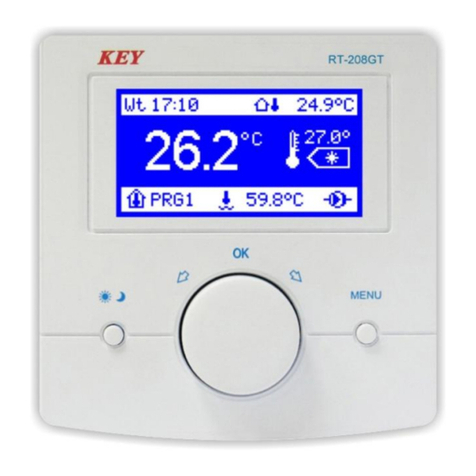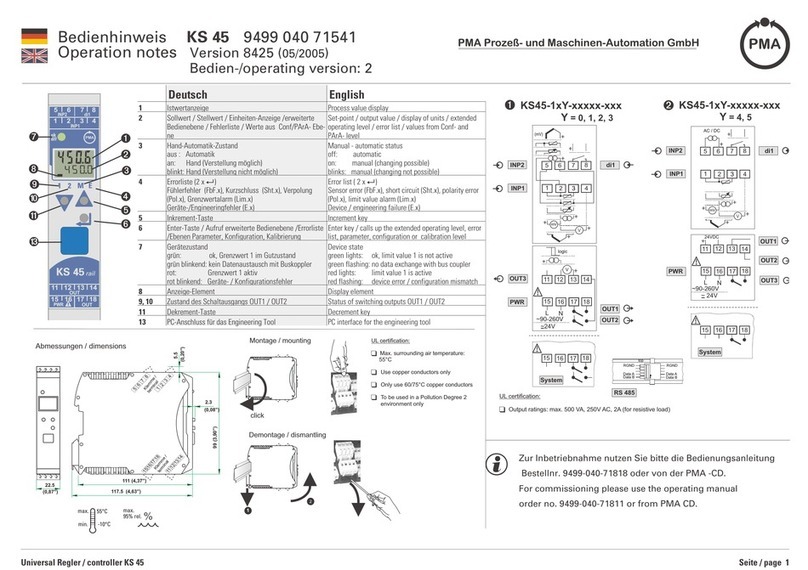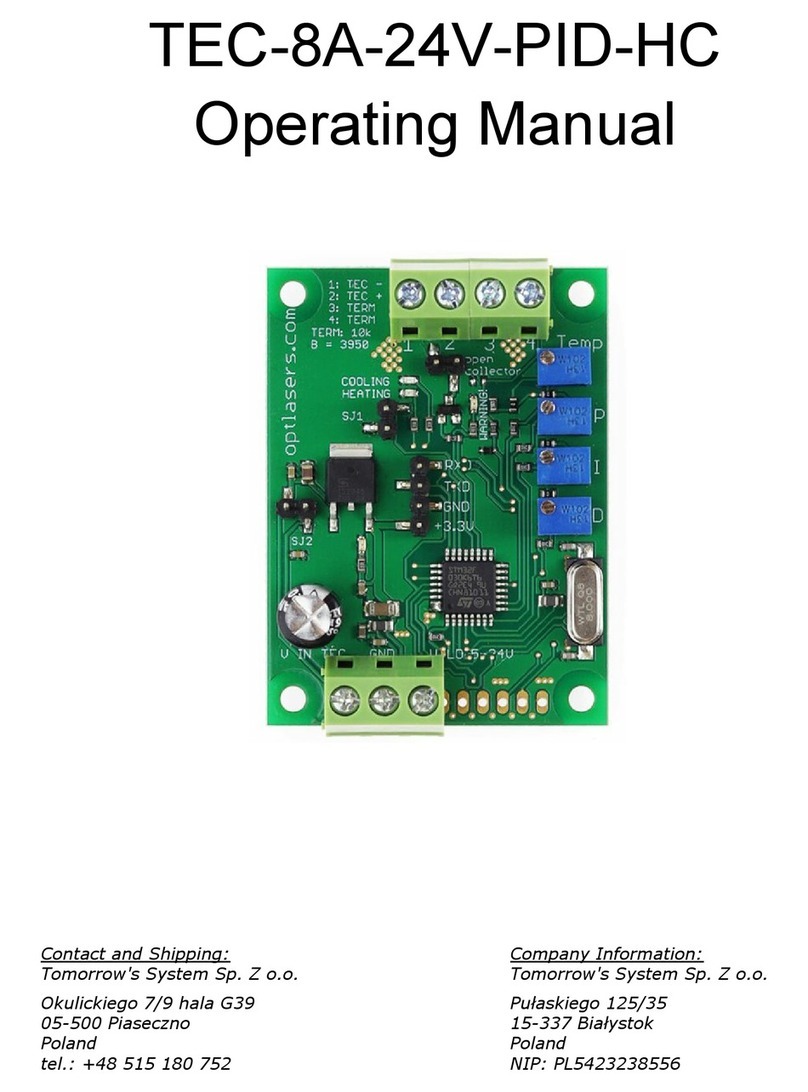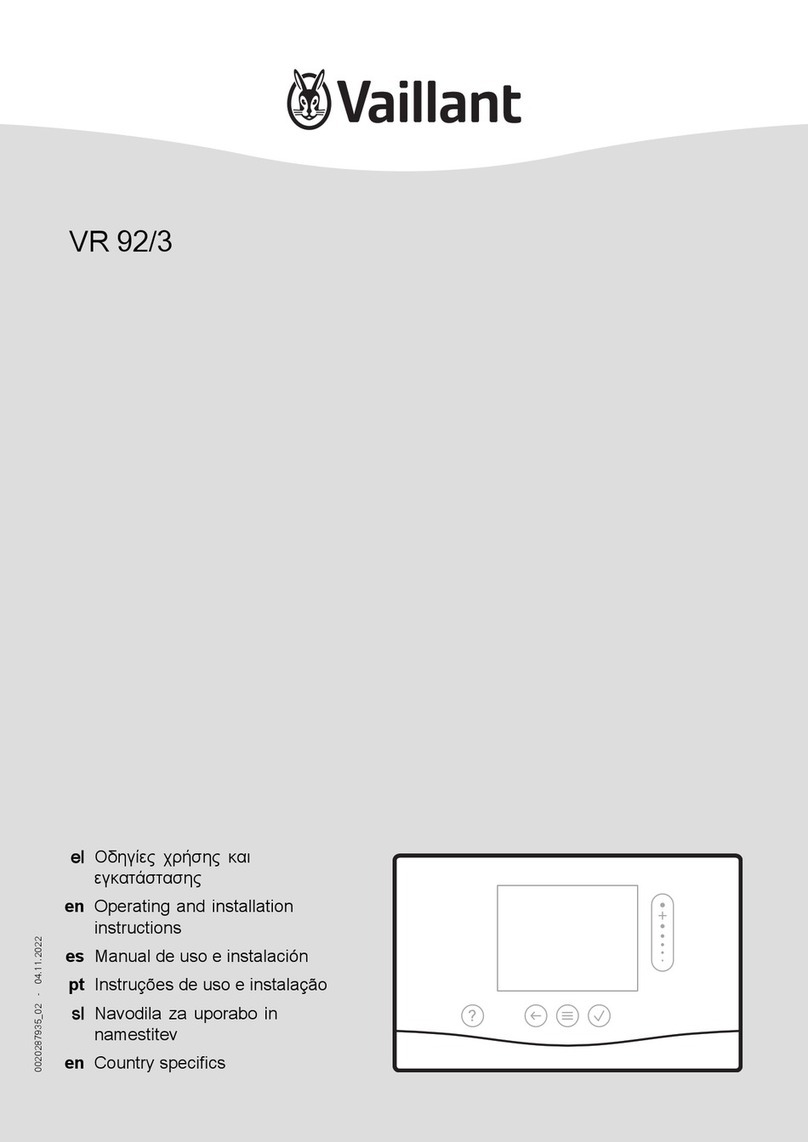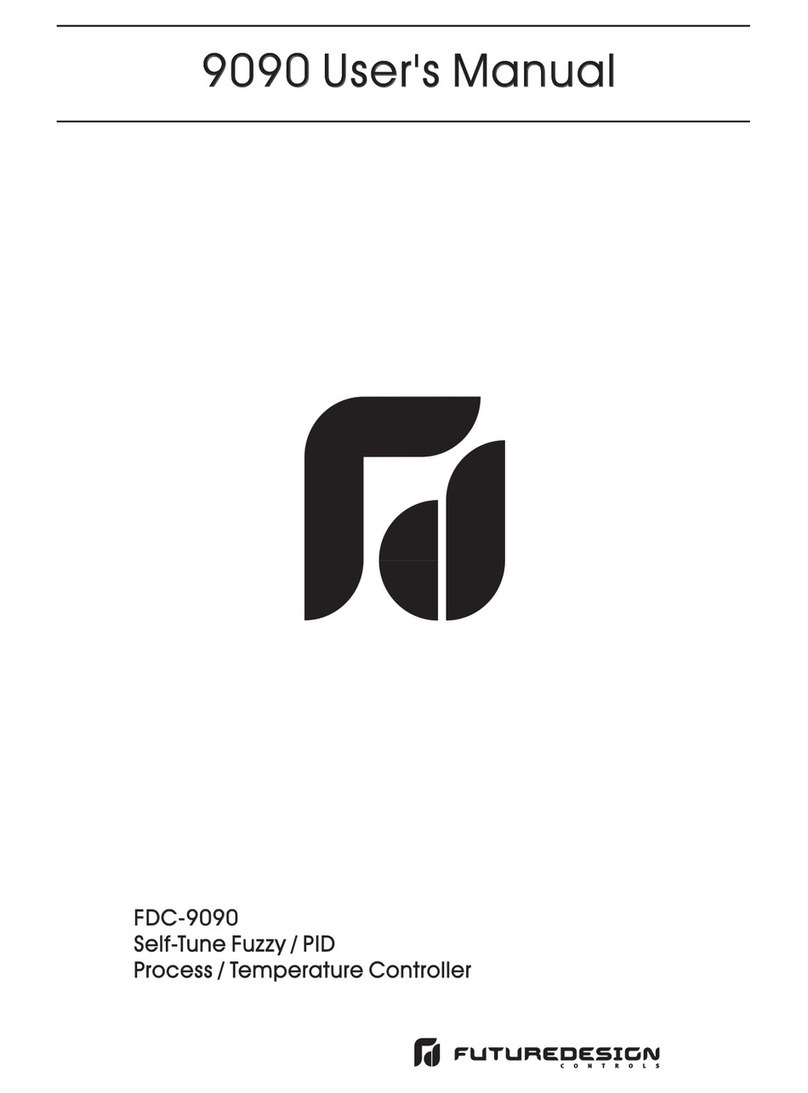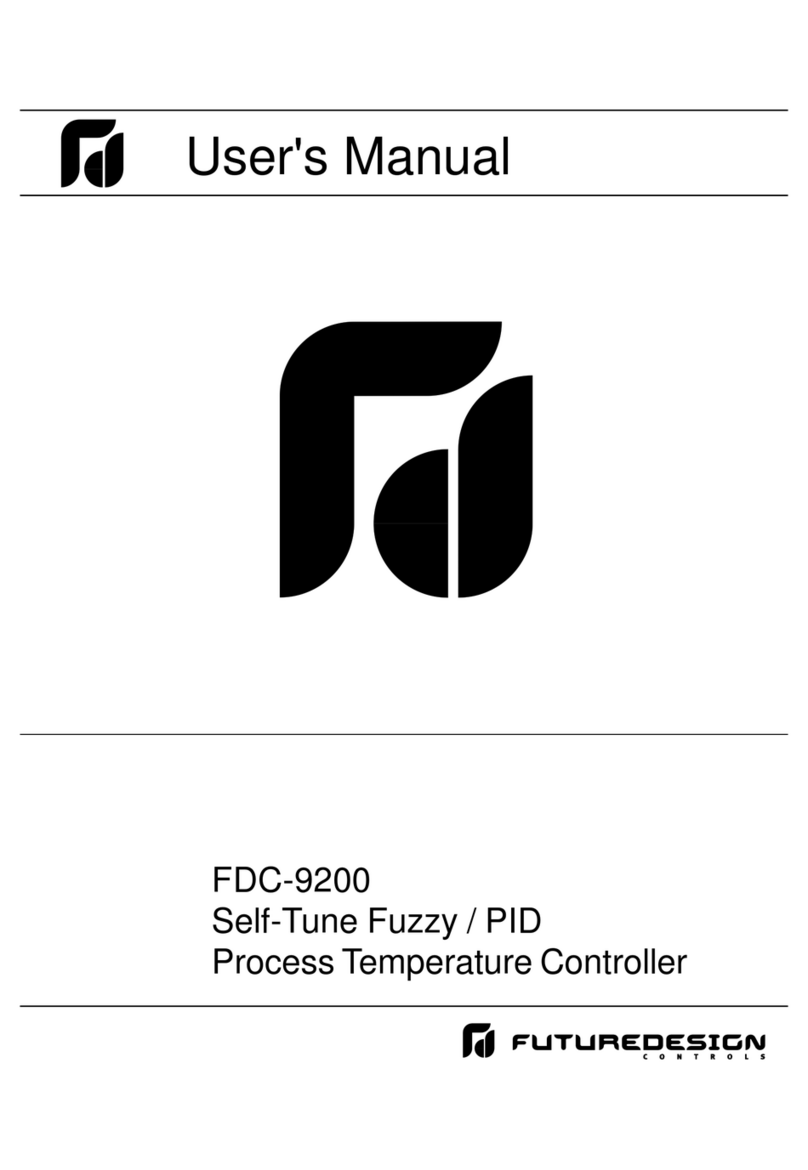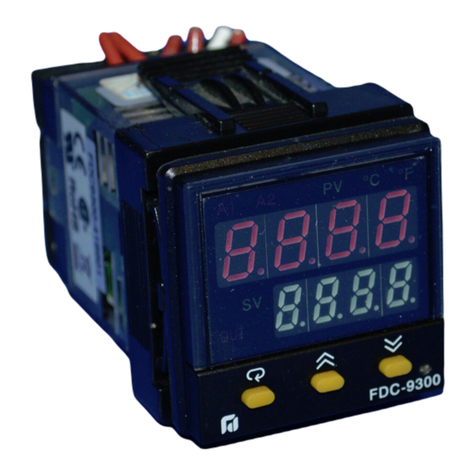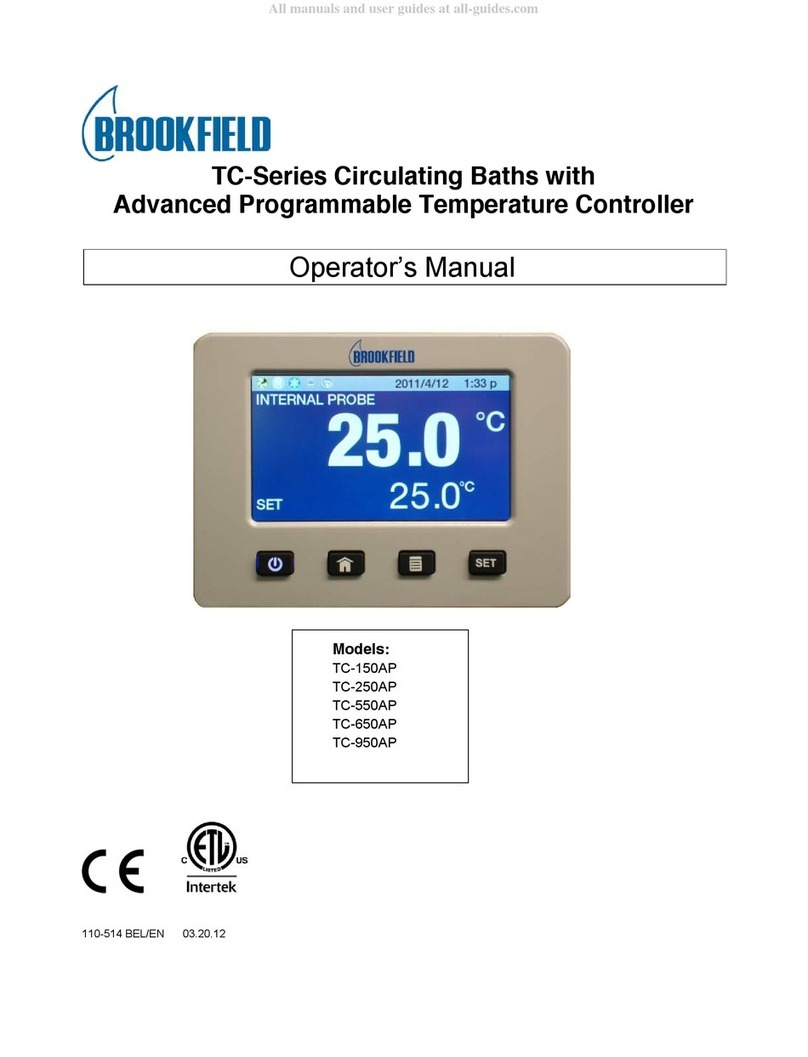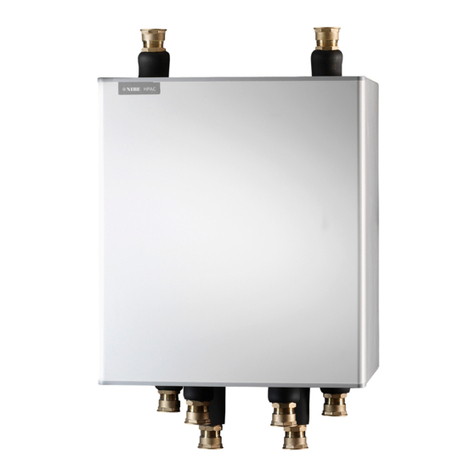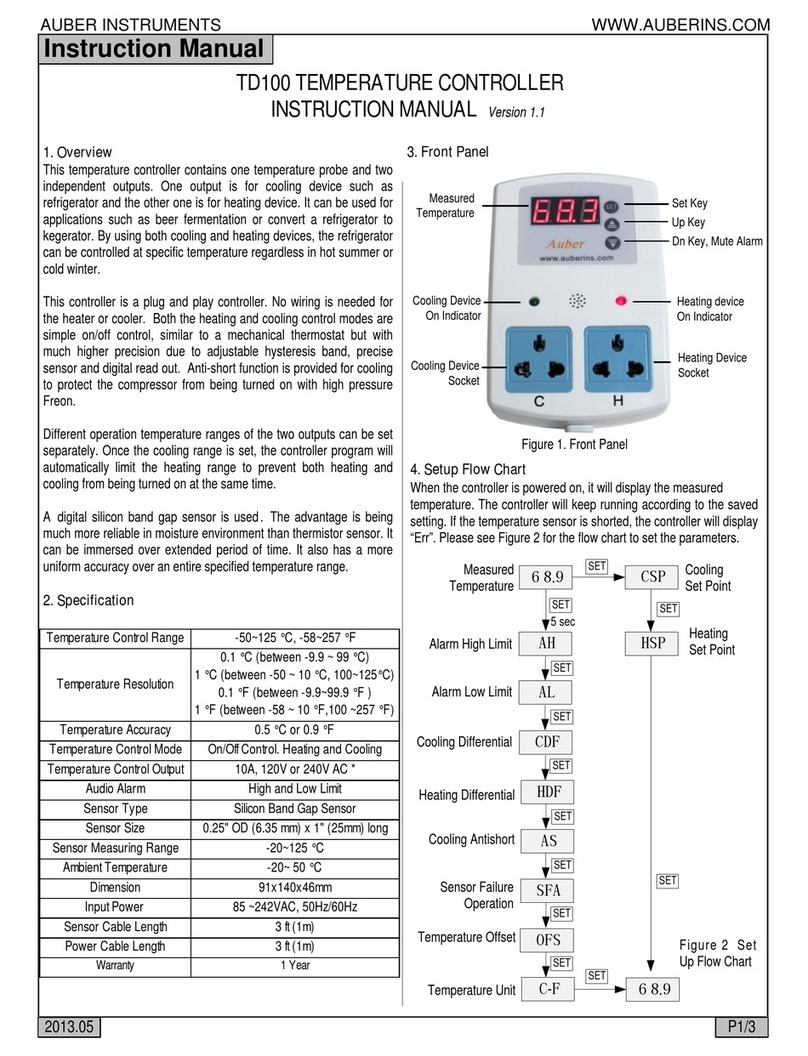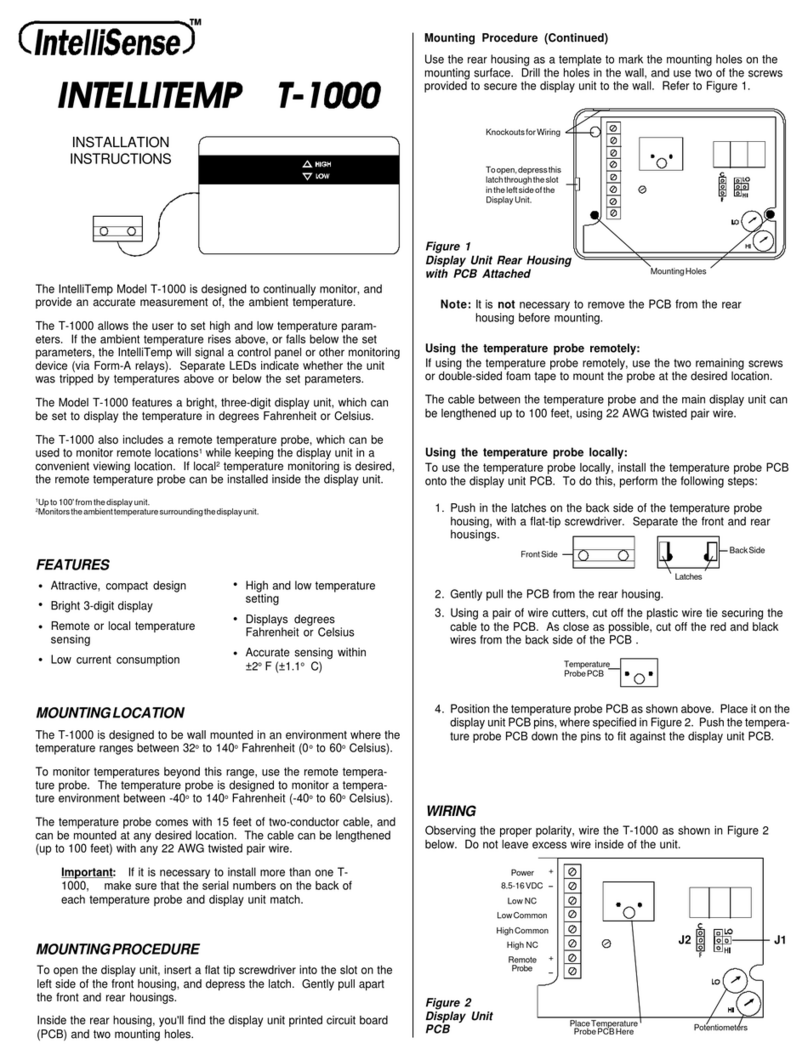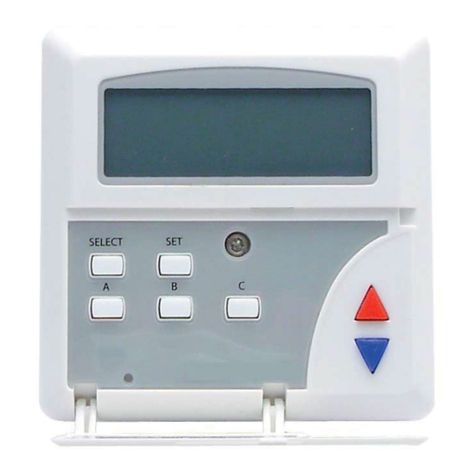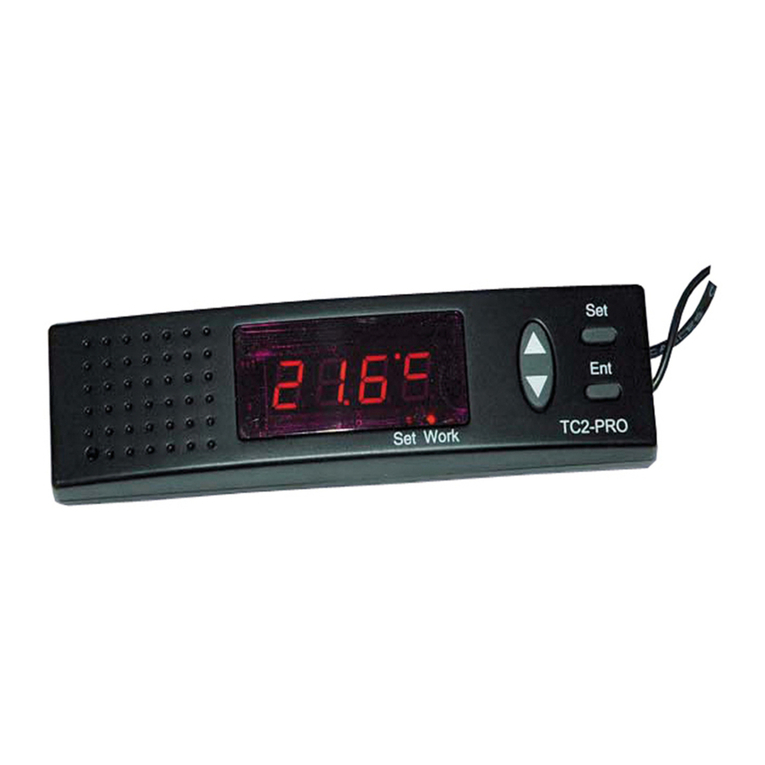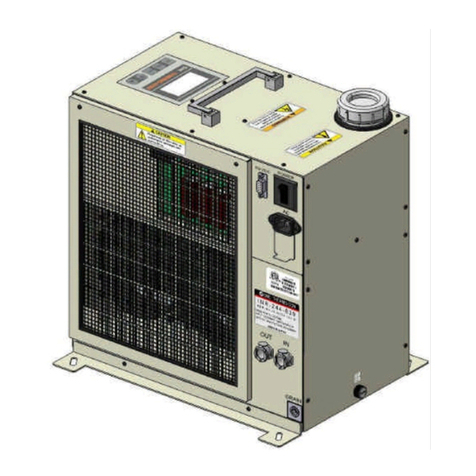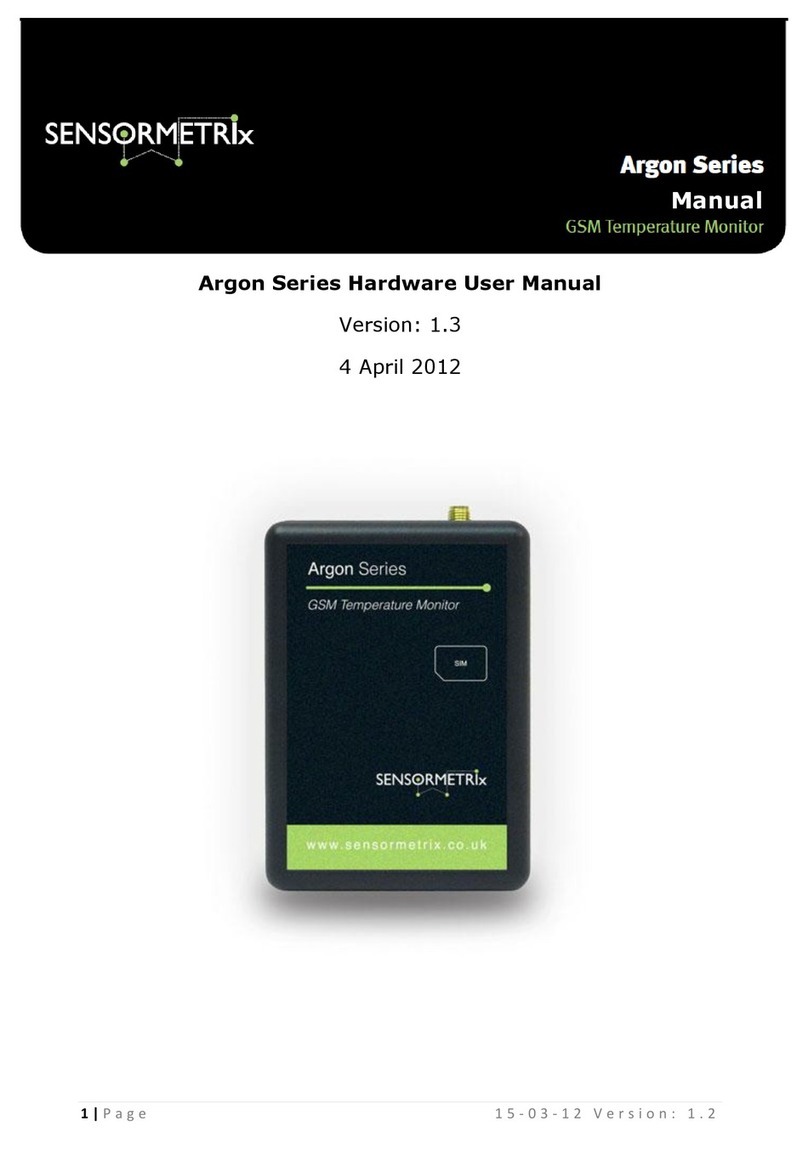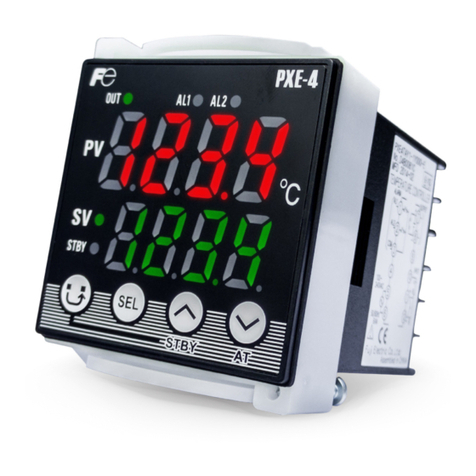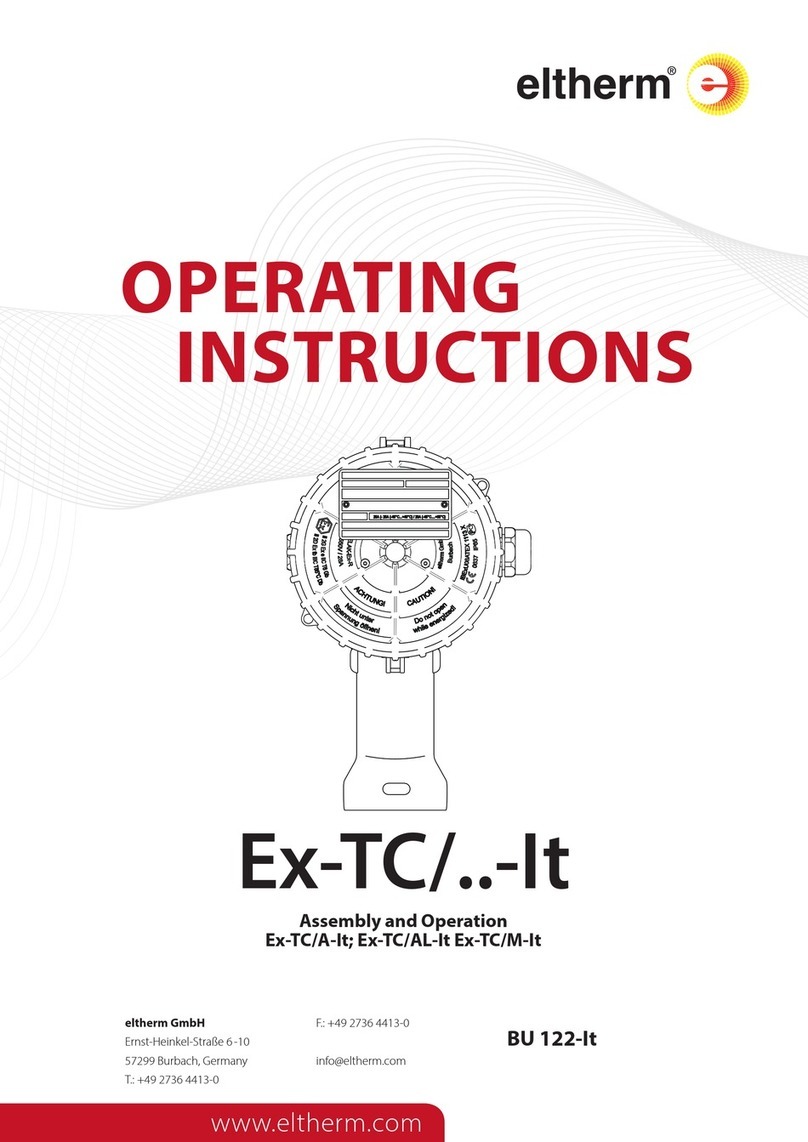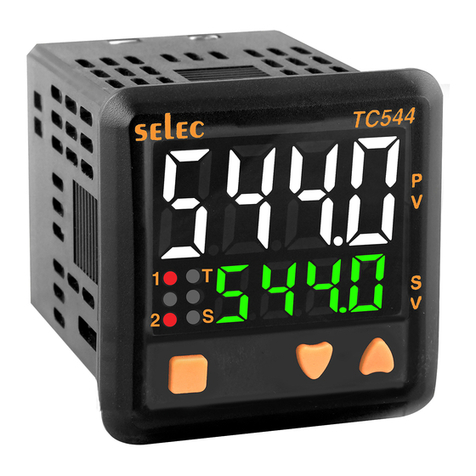LOSC, HISC - Low / High Scale Range
If thermocouple or PT100 is selected as input type (INPT) these parameters
are used to define the range of the setpoint adjustment. Otherwise, If
linear process input is selected, these parameters are used to define the
range of the process value and setpoint adjustment, refer section 5.14 for
more details.
PL1, PL2 - Power limit for Heating and Cooling Outputs
These parameters limit maximum heating and cooling percentage power
during warm up and in proportional band. These are used only for those
processes that heat or cool with full speed are dangerous or not
satisfactory with the results. For normal applications these parameters
are set to 100%.
INPT - Input Type selection
Select a correct type in accordance with the input connection.
UNIT - Process Unit
Select a correct unit for the process. for linear process input select Pu
(Process Unit) if the unit is other than °C or °F.
RESO- Select Decimal Point Position (Resolution)
This parameter defines the position of the decimal point on the process
value and setpoint.
Value DecimalPointPosition
xxxx
xxx.x
xx.xx
Note that is used only for linear process input.
CONA - Control Action of Output 1
Select (Reverse) action for heating process, that is to increase
output power as the process value decreases ( or setpoint increases).
Select (Direct) action for cooling process, that is to increase output
power as the process value increases (or setpoint decreases).
A1MD - Alarm Mode Selection for Alarm 1
Refer section 5.10 for an in-depth description.
A1SF - Alarm 1 Special Function
Select a hold function or latch function for Alarm 1. See section 5.10 for
more details. Select or to reconfigure Alarm 1 output
as a dwell timer. See section 5.13 for more details.
CYC, CCYC - Proportional Cycle Time of Output 1 and Cooling Outtput
Select a proper value for the process in accordance with the output
devices fitted. See section 5.5.2 for further discussion.
CPB,DB - Cooling P Band, Cooling DeadBand
Refer section 5.9 for description. If no cooling is fitted for the controller,
these parameters may be neglected.
5.5.1 Learning the Parameters
SV - Setpoint Value
This parameter is the desired target of the process. It can be adjusted
within the range defined by the Low Scale Value (LOSC) and High Scale
Value (HISC). The default value is 100°C (212°F).
ASP1 - Alarm 1 Setpoint Value or Dwell Time
This sets the levels at which the alarm 1 will operate if AISF is selected for
alarm function. If AISF is selected for dwell timer ( or ),
ASP1 is used as setting value of dwell timer. The timer start to count as the
process value reaches the setpoint value, see section 5.10 and 5.13 for
more details.
RAMP-RampRate
This forces the process to warm up (or cool) with a predetermined rate as
power applied. Setting this parameter to zero if no ramp is needed. The
process will warm up (or cool) with maximum speed.
OFST - Offset Value for Manual Reset
For those systems it is desired to perform manual reset control by setting
integral time ( TI ) to zero, OFST is adjusted to compensate the deviation
between PV and SV. If PV is too low for reverse control action (or too high
for direct control action) then increase value of OFST. If TI is not zero,
OFST is unchangeable.
SHIF - Shift Process Value
This value will be added to the process value so that the process value will
be read with minimum error. For those process with bad circulation may
use this parameter to compensate the temperature difference between
sensor and the process.
PB, TI, TD - Constants for PID Control
Refer section 5.7 for an in-depth description.
AHY1 - Hysteresis Values of Alarm 1
These values define the dead bands for alarm action. As the process
value exceeds the boundary of the dead band and stays within the band
the alarm will remain same status.
HYST - Hysteresis Value of ON-OFF Control
This parameter defines a dead band for the ON-OFF control.
ADDR - Address of the unit for the communication
This parameter provides an identity code for the RS-485 interface. Note
that it is not allowable to set the same ADDR code for those controllers
communicating with same computer to prevent line contention problems. If
the controller does not use the RS-485 interface, the ADDR can be
neglected.
5.5 SETTING-UPPROCEDURES
As power applied, the model number of the controller and its software
version number will be displayed for 3.2 seconds, then all the display
segments and LED indicators will be lit for 3.2 seconds. After the 6.4
seconds of initial cycle the controller enters the normal display mode, the
display shows the current process value and the alternative display shows
the setpoint value. The display will continuously flash in cases of:
(1) during executing autotune program
(2) during executing manual mode program
(3) warning that the next parameter is a higher level parameter as scroll
key is depressed. The warning message will maintain a duration of
3.2 seconds. If the scroll key is released after the duration elapses
the display will indicate the code of next parameter ( in the display)
and its value ( in the alternative display ), otherwise, the display will
return to normal mode to indicate process value and setpoint value.
The display will blink a moment as a new value of parameter is written into
the non-volatile memory. The display is also used to indicate the error
messages in case of abnormal condition occurs. Subsequently, each
depression of the scroll key will step down the controller through the
default sequence of displays shown in Table of section 5.3. If unfortunately
the desired parameter passed on the display, it can still be retained by
pressing and to prevent frustration. The sequence of displays
can be reconfigured by changing the security level of parameters as
described in subsequent section.
5.5.2 Initial Setup
Access the keypads to view the value of each parameter. For an
undesirable value of parameter perform up and down key to obtain a
correct value, then proceed to the next parameter until all parameters are
verified. Note that the new value of parameters are entered into nonvolatile
memoryautomatically.
The adjustment of proportional cycle time (CYC and CCYC) is related to the
speed of process response and the output device fitted. for a faster
process it is recommended to use SSR ( to select SSR Drive Output) or
SCR ( to select linear current or voltage output) to drive the load. The
relay output is used to drive magnetic contactor in a slow process. If a
long cycle time is selected for a fast process an unstable result may occur.
Theoretically the smaller the cycle time is selected, the better control can
be achieved. But for relay output, the cycle time should be as large as
possible (consistent with satisfactory control) in order to maximize relay
life.
Page7
